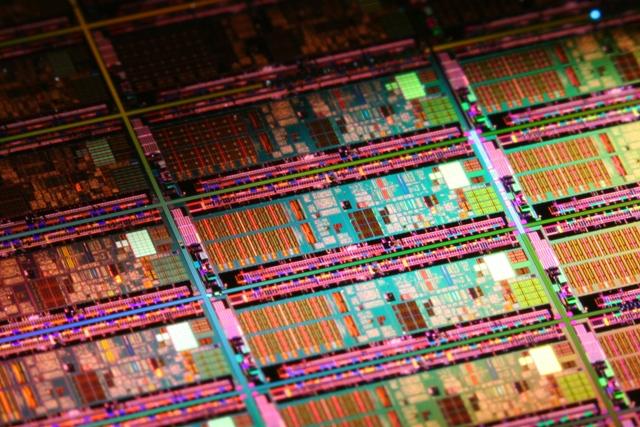CHALLENGES AND CONCERNS OF THE END OF MOORE’S LAW
The Future for Technology
The key to the future of humanity is the evolution and advancement of technology. However, we are accelerating towards a road block: an unfortunate end to an era of technological advancement. We are nearing the end of Moore’s Law, an observation by Intel co-founder Gordon Moore who said “the number of transistors incorporated in a chip will approximately double every 24 months” (qtd. in “Moore’s Law and Intel Innovation). Computer processor companies like Intel, AMD, and IBM have profited off of Moore’s Law for years, and now that it is coming to a close, they are now forced to innovate. The end of Moore’s Law will bring about certain economic and technological challenges unless we innovate and pursue new technology.
Amazingly, this observation by Moore has held true for years, but it appears we are nearing the limit of silicon-based processors. We have reached a point in microchip manufacturing that it will eventually become physically impossible to make the transistors any smaller. The processor with the smallest transistors on the market right now has transistors measuring only fourteen nanometers across (Simonite). Bob Colwell, a former chief architect at Intel says seven to five nanometers is the smallest transistor size that could possibly work in a silicon processor, and he predicts Moore’s Law to expire by 2020 (Crothers). Michio Kaku, a theoretical physicist, states the reason we cannot make the transistors any smaller is because of “heat and leakage issues” (qtd. in Peckham). If Moore’s Law stops in 2020, then the silicon computer will become obsolete, and all innovation and technological progress made so far in the field of electronics will come to a halt. This must be avoided at all costs, that is why several companies are struggling to find a replacement for the silicon processor. IBM appears to have the answer as “IBM is now aiming to have transistors built using carbon nanotubes ready to take over from silicon transistors soon after 2020”(Simonite). Another candidate is the quantum computer by D-Wave systems, which “taps directly into the fundamental fabric of reality… to speed computation” (Quantum Computing How D-Wave Systems Work”). Both these technologies seem promising, but IBM has admitted that “success is not guaranteed” (Simonite) and quantum computers are mostly theoretical and are nowhere near being universally implemented by 2020 (“Quantum Computing 101”). Ultimately, the corporations will decide what will be the next innovation in computer engineering, and if they cannot succeed in coming up with a new processor, it’s not only bad for the technological advancement of humanity, but also bad for them as businesses.
Although there are extreme technical limitations regarding the next in processor technology, there are certain economic factors that may also play a part in the end of Moore’s Law. It is certainly possible for a company like Intel to make a transistor that is five nanometers, however the cost required to manufacture a transistor that size may not be worth the performance. Bob Colwell explains that processor companies like Intel may not think it’s worth building a new processor that small by saying, “[It takes] huge amounts to build the fab plants, and yet more… to pay for the design teams to design new chips. Intel makes these investments, which are in the [billions of dollars], because they expect to reap way more [billions of dollars] in profits the following years” (qtd. in Crothers). Ever since 2005, the performance reaped from the increase in transistors has severely diminished, with chip manufacturers choosing to add more cores to the processor rather than focus on the clock rate of a single core processor (Shankland). I believe if Intel, and other companies, choose not to innovate and do not prepare for the inevitable end of Moore’s Law, they may cease to exist in the consumer market.
For so long, Moore’s Law has been the driving factor of innovation in the computer industry, and now that it is coming to a close, microchip manufacturers must pursue alternate technology if we wish to evolve technologically. There is a huge challenge resting on the shoulders of companies like Intel and IBM, and it is up to them to decide how we will continue in the field of electronics. I see the quantum computer as the most interesting and the most promising future processor, which if what D-Wave says is true, may offer limitless potential. It is time for the computer industry to start thinking of the future in long term, rather than two years at a time.
Works Cited
Crothers, Brooke. “End of Moore’s Law: It’s Not Just about Physics – CNET.” CNET. CNET, 28 Aug. 2013. Web. 20 Mar. 2015.
“Moore’s Law and Intel Innovation.” Intel. Intel Corporation. Web. 30 Mar. 2015.
Peckham, Matt. “The Collapse of Moore’s Law: Physicist Says It’s Already Happening.” Time. Time, 1 May 2012. Web. 20 Mar. 2015.
“Quantum Computing How D-Wave Systems Work.” Dwavesys. D-Wave Systems Inc. Web. 20 Mar. 2015.
“Quantum Computing 101.” Uwaterloo. University of Waterloo. Web. 20 Mar. 2015.
Shankland, Stephen. “What Would Happen If Moore’s Law Did Fizzle? – CNET.” CNET. CNET, 15 Oct. 2012. Web. 21 Mar. 2015.
Simonite, Tom. “IBM: Commercial Nanotube Transistors Are Coming Soon.” Technologyreview. Jason Pontin, 1 July 2014. Web. 20 Mar. 2015.







